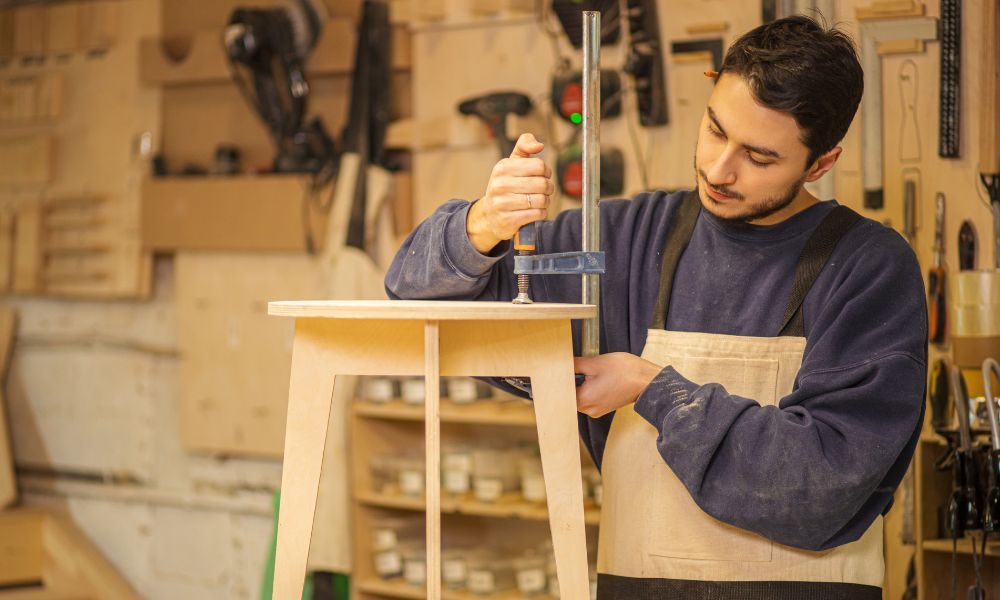Menu

A Guide to Assessing Wooden Furniture Quality
Wooden furniture has long been cherished for its timeless beauty, durability, and versatility. Whether furnishing your home or updating your existing décor, investing in high-quality wooden furniture can significantly enhance your living space. However, with the myriad of available options, assessing wooden furniture quality can be challenging. This guide aims to provide comprehensive insights into evaluating wooden furniture, ensuring your investment is both wise and lasting.
Understanding wood types
The first step in assessing wooden furniture quality is understanding the different types of wood used. Wood can be generally classified into hardwood and softwood. Hardwood, sourced from deciduous trees like oak, maple, and walnut, is known for its strength and durability. Softwood, derived from coniferous trees such as pine and cedar, is generally lighter and less dense.
Hardwood vs. Softwood
- Hardwood: Typically more expensive, hardwood furniture is robust and can withstand daily wear and tear. It also has a finer grain and a richer color, which adds to its aesthetic appeal.
- Softwood: While more affordable, softwood furniture is more prone to dents and scratches. However, it is easier to work with, making it famous for custom pieces.
Engineered wood
In addition to solid wood, engineered wood products like plywood, MDF (medium-density fiberboard), and particleboard are commonly used in furniture making. These materials are often used for furniture parts that are not visible, such as drawer backs and bottoms. While they offer cost benefits, they generally provide a different durability and aesthetic appeal than solid wood.
Evaluating construction techniques
Wooden furniture construction techniques significantly influence its quality and longevity. Here are some key aspects to consider.
Joinery
High-quality joinery is a hallmark of well-made wooden furniture. Look for pieces with dovetail joints, mortise and tenon joints, and tongue and groove joints. These methods are stronger and more durable than more straightforward techniques like butt joints or nails and staples.
Fasteners and glue
Examine the furniture fasteners and glue. High-quality furniture often uses screws and dowels rather than nails. Additionally, strong adhesives can enhance joint durability.
Frame Construction
Frame construction is crucial for chairs, sofas, and other seating furniture. Kiln-dried hardwood frames are ideal as they resist warping and cracking. Ensure that the frame is sturdy and does not wobble when tested.
Performing a finished inspection
Finishing wooden furniture enhances its appearance and protects wood from damage. High-quality finishes should be smooth, even, and free of bubbles or rough patches.
Types of finishes
- Lacquer: Provides a sturdy, durable finish that resists moisture and scratches.
- Polyurethane: Offers excellent protection against water and heat, making it ideal for dining tables and kitchen cabinets.
- Oil: Penetrates wood and enhances its natural beauty. It requires regular maintenance but provides a warm, rich finish.
- Wax: Adds a soft sheen to wood and protects it. It is best used as a topcoat over other finishes.
Inspect the application
Run your hand over the furniture surface to check for smoothness. Inspect the edges and corners for drips or uneven application. The finish should enhance the wood's natural grain and provide a consistent appearance.
Assessing Durability and Stability
Durability and stability are critical factors in determining wooden furniture quality. Here are some tips to assess these aspects:
Weight
High-quality wooden furniture is often heavier due to the density of the wood and the robustness of its construction. While lighter furniture is more accessible to move, it may not offer the same durability.
Stability
Test the furniture's stability by gently shaking it or sitting on it. Well-constructed furniture should be smooth and smooth. Check for any weakness or instability, especially in the legs and arms.
The drawers and doors of the house
Check the ease of operation of furniture with drawers and doors. Drawers should slide smoothly and fit well in their slots, and doors should open and close without creaking or sticking. High-quality furniture often features dovetail joints in drawers and adjustable hinges for doors.
Recognizing Quality Craftsmanship
Craftsmanship is a crucial indicator of furniture quality. Look for the following signs of superior craftsmanship:
Sustainability considerations
In today's environmentally conscious world, the sustainability of furniture materials and processes is increasingly significant. Look for furniture made from sustainably sourced wood certified by organizations. Additionally, consider furniture with eco-friendly finishes and adhesives.
Final thoughts
Assessing the quality of wooden furniture requires a keen eye and a thorough understanding of materials, construction techniques, and finishes. By evaluating these factors, you can ensure that your investment in wooden furniture will provide lasting beauty and functionality for years. Whether selecting a statement piece or furnishing an entire room, high-quality wooden furniture can transform your living space into a warm, inviting haven.
- Choosing a selection results in a full page refresh.
